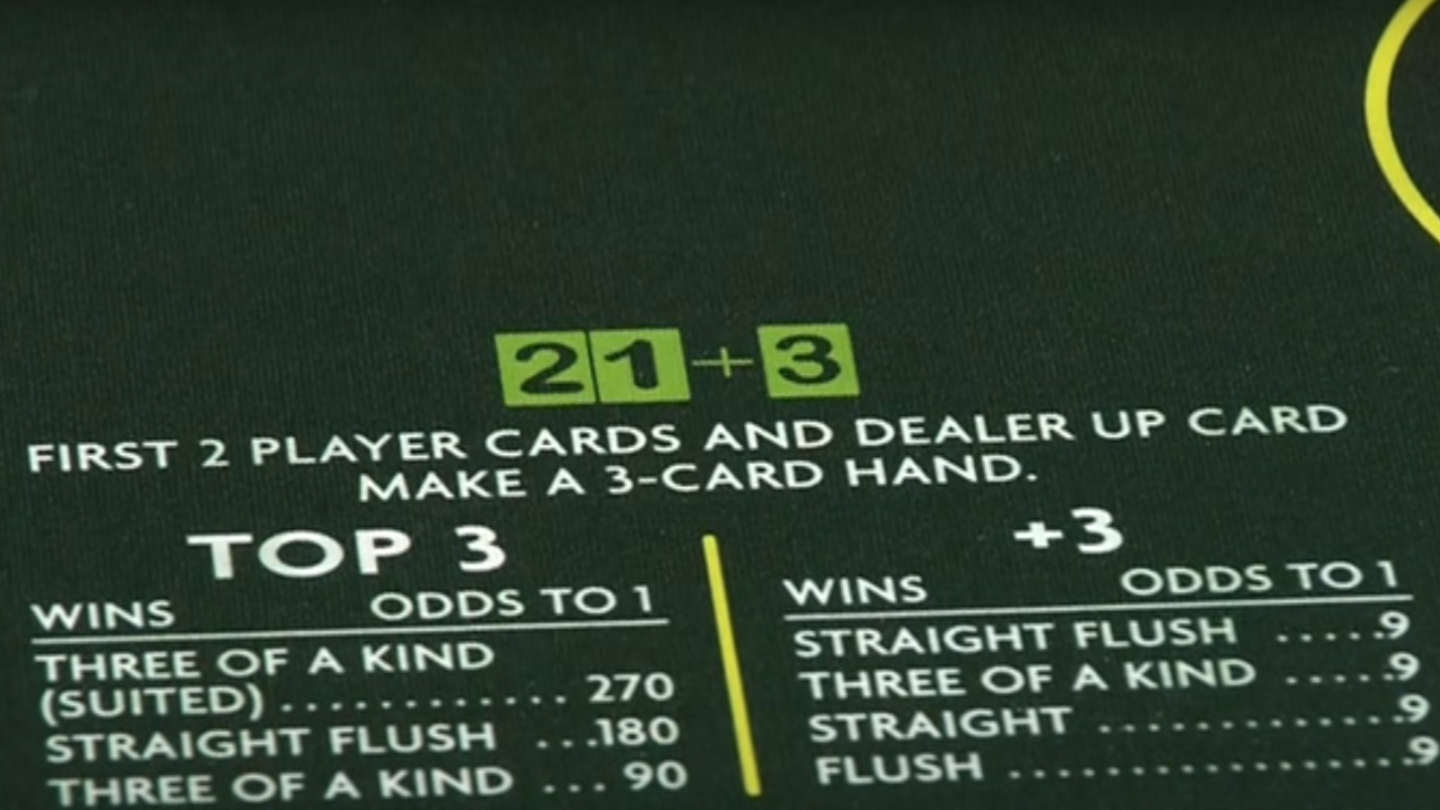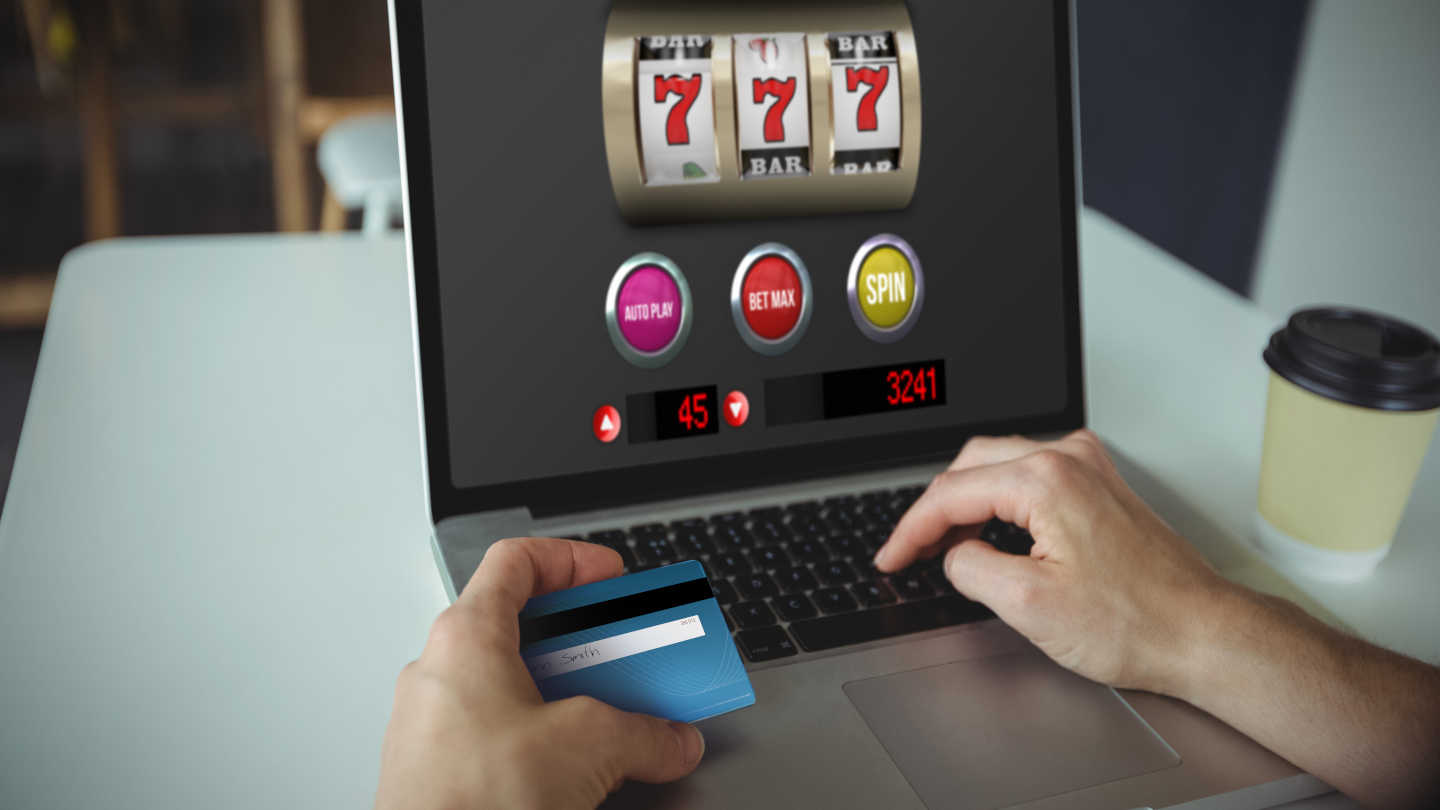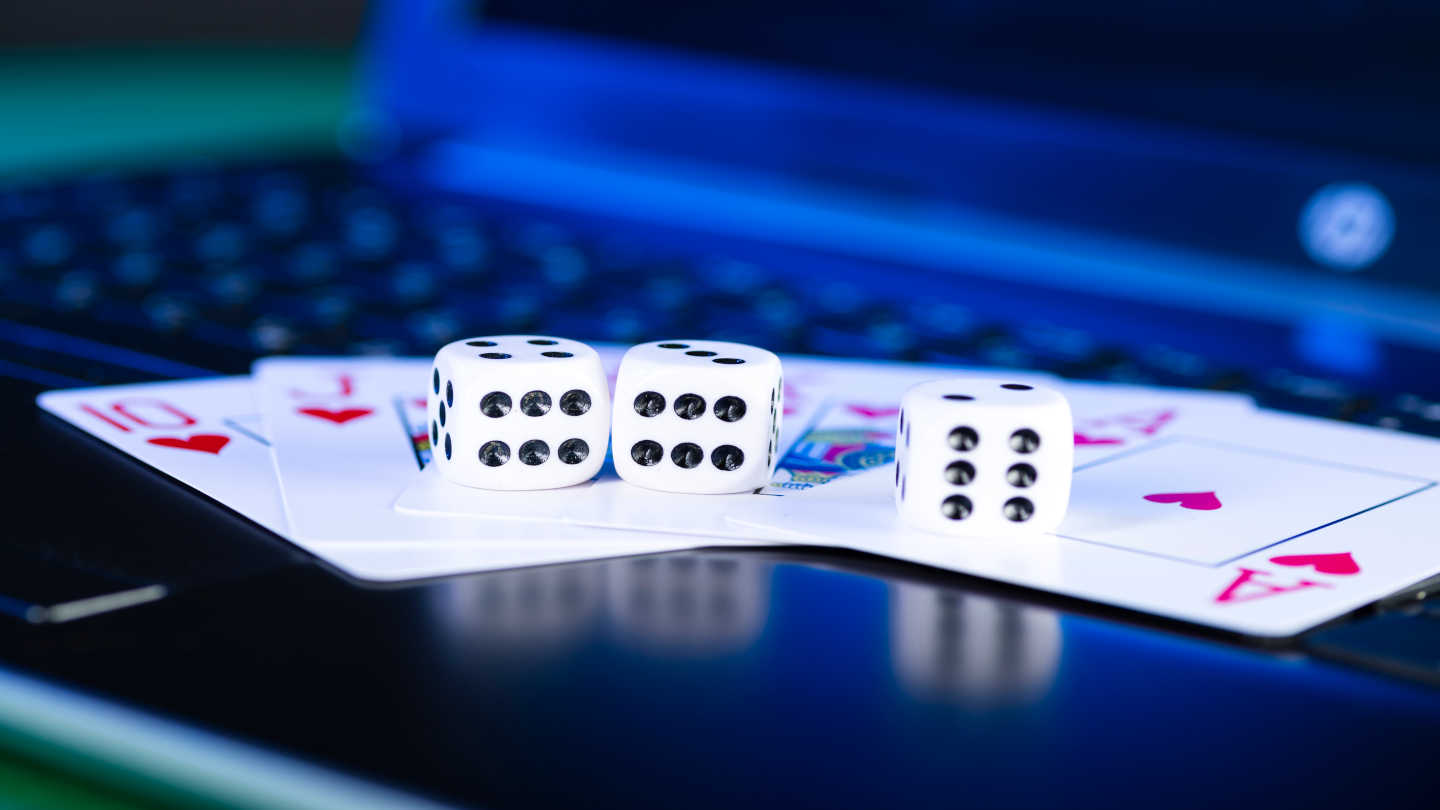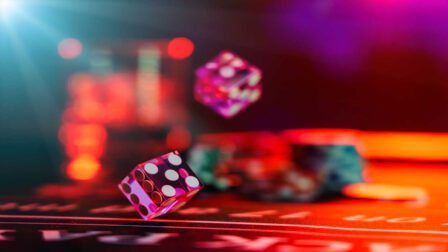What is 21+3 in Blackjack?

1 minute
Last Updated: February 13, 2024
21+3 is a popular side bet in blackjack. The side bet works by matching the player’s two cards with the dealer's up card. If the cards form a straight flush, flush, three-of-a-kind, or straight, then the player wins the bet. To engage in this side bet, players must place it before the cards are dealt. The amount you win from your bet is determined by the odds of the combinations allowed in the side bet. Here is a table showing the different hands, their interpretation, and the odds they give:
| Hand | Interpretation | Odds |
| Flush | Three cards in the same suit. | 5:1 |
| Straight | Three cards of consecutive values. For example, 2, 3, and 4. Aces can be high or low under the side bet. | 10:1 |
| Three-of-a-Kind | Three cards of the same face value. | 30:1 |
| Straight Flush | Three cards of consecutive values that are all in the same suit. | 40:1 |
| Suited Three of a Kind | Three cards of the same face value that are all in the same suit. | 100:1 |
Is It a Good Side Bet?
The house edge for the 21+3 side bet varies depending on the number of decks used at the table. An eight-deck game has the lowest house edge with 3.62%, which is followed closely by the six-deck version with 3.7%. Playing with four decks raises the house edge to 6.39%, and a single-deck game has a high house edge of 13.39%. It is not worth it for a player to use the side bet, especially when the regular game has house edges as low as 0.5%. It should only be used as part of a broader blackjack strategy because it puts players at a disadvantage.















